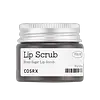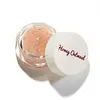What's inside
What's inside
 Key Ingredients
Key Ingredients

No key ingredients
 Benefits
Benefits

 Concerns
Concerns

 Ingredients Side-by-side
Ingredients Side-by-side

Sucrose
HumectantCaprylic/Capric Triglyceride
MaskingGlycerin
HumectantEuphorbia Cerifera Wax
Sorbeth-30 Tetraoleate
EmulsifyingButyrospermum Parkii Butter
Skin ConditioningBis-Diglyceryl Polyacyladipate-2
EmollientWater
Skin ConditioningStearalkonium Hectorite
Gel Forming1,2-Hexanediol
Skin ConditioningPropylene Carbonate
SolventTheobroma Cacao Extract
Skin ConditioningEthylhexylglycerin
Skin ConditioningButylene Glycol
HumectantSaccharum Officinarum Extract
MoisturisingDextrin
AbsorbentCitrus Limon Fruit Extract
MaskingHoney
HumectantSucrose, Caprylic/Capric Triglyceride, Glycerin, Euphorbia Cerifera Wax, Sorbeth-30 Tetraoleate, Butyrospermum Parkii Butter, Bis-Diglyceryl Polyacyladipate-2, Water, Stearalkonium Hectorite, 1,2-Hexanediol, Propylene Carbonate, Theobroma Cacao Extract, Ethylhexylglycerin, Butylene Glycol, Saccharum Officinarum Extract, Dextrin, Citrus Limon Fruit Extract, Honey
Petrolatum
EmollientSucrose
HumectantMicrocrystalline Wax
Emulsion StabilisingPhytosteryl/Isostearyl/Cetyl/Stearyl/Behenyl Dimer Dilinoleate
Skin ConditioningDiisostearyl Malate
EmollientPEG-20 Glyceryl Triisostearate
EmollientSilica Silylate
EmollientPrunus Armeniaca Seed Powder
AbrasiveJuglans Regia Shell Powder
Abrasive1,2-Hexanediol
Skin ConditioningCaprylic/Capric Glycerides
EmollientTocopheryl Acetate
AntioxidantParfum
MaskingWater
Skin ConditioningButylene Glycol
HumectantAvena Sativa Meal Extract
SoothingHoney
HumectantSodium Hyaluronate
HumectantHydrolyzed Hyaluronic Acid
HumectantHydroxypropyltrimonium Hyaluronate
Petrolatum, Sucrose, Microcrystalline Wax, Phytosteryl/Isostearyl/Cetyl/Stearyl/Behenyl Dimer Dilinoleate, Diisostearyl Malate, PEG-20 Glyceryl Triisostearate, Silica Silylate, Prunus Armeniaca Seed Powder, Juglans Regia Shell Powder, 1,2-Hexanediol, Caprylic/Capric Glycerides, Tocopheryl Acetate, Parfum, Water, Butylene Glycol, Avena Sativa Meal Extract, Honey, Sodium Hyaluronate, Hydrolyzed Hyaluronic Acid, Hydroxypropyltrimonium Hyaluronate
 Reviews
Reviews

Ingredients Explained
These ingredients are found in both products.
Ingredients higher up in an ingredient list are typically present in a larger amount.
1,2-Hexanediol is a synthetic liquid and another multi-functional powerhouse.
It is a:
- Humectant, drawing moisture into the skin
- Emollient, helping to soften skin
- Solvent, dispersing and stabilizing formulas
- Preservative booster, enhancing the antimicrobial activity of other preservatives
Butylene Glycol (or BG) is used within cosmetic products for a few different reasons:
Overall, Butylene Glycol is a safe and well-rounded ingredient that works well with other ingredients.
Though this ingredient works well with most skin types, some people with sensitive skin may experience a reaction such as allergic rashes, closed comedones, or itchiness.
Learn more about Butylene GlycolHoney comes from bees. It is mainly made up of the sugars fructose and glucose.
Besides sugar, honey also contains amino acids, peptides, Vitamins A, C, and E. Vitamins A, C, and E.
As a humectant, honey is great at hydrating the skin. Humectants draw moisture from the air and hold it to your skin.
Honey also has antioxidant and antioxidant properties. Fun fact: darker honey has more antioxidants than light honey.
The antibacterial property of honey may make it effective at helping to treat acne. We recommend speaking with a professional if you have concerns.
Many people wonder if honey is vegan. It is technically a byproduct from bees. This is because honey is created from the digestive enzymes in a bee's stomach.
Remember to be kind to bees :) They are important for many ecosystems and are endangered.
Learn more about HoneySucrose is a natural sugar found in fruits, vegetables, and nuts. It is the main constituent of white sugar.
In skincare, sucrose is a humectant and can be a mild exfoliant.
Sucrose is hydrophilic, meaning it attracts water. This makes it an effective humectant and helps hydrate the skin.
Studies show sugars may worsen acne-prone skin due to it disrupting the skin's natural biome. We recommend speaking with a professional if you have any concerns.
In some products such as body scrubs, sucrose is used as an gentle exfoliant.
The term 'sucrose' comes from the french word for sugar, 'sucre'.
Learn more about SucroseWater. It's the most common cosmetic ingredient of all. You'll usually see it at the top of ingredient lists, meaning that it makes up the largest part of the product.
So why is it so popular? Water most often acts as a solvent - this means that it helps dissolve other ingredients into the formulation.
You'll also recognize water as that liquid we all need to stay alive. If you see this, drink a glass of water. Stay hydrated!
Learn more about Water